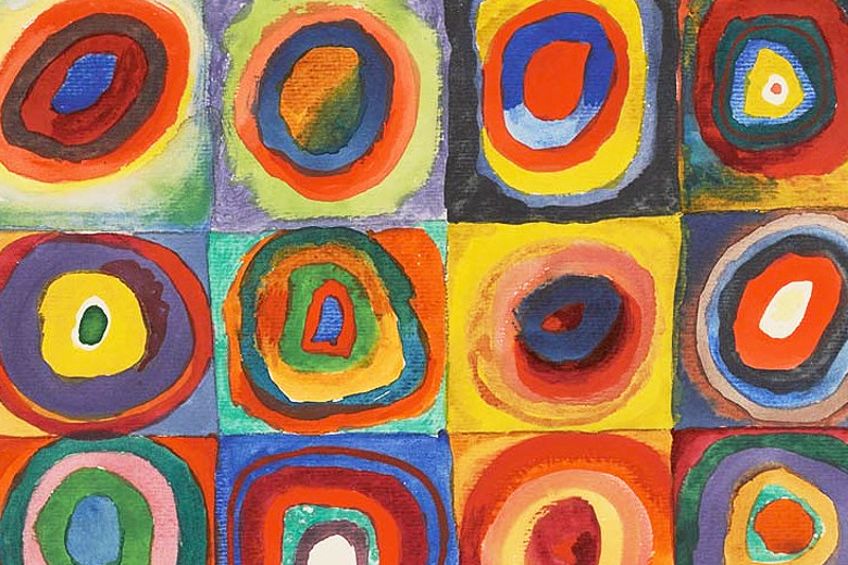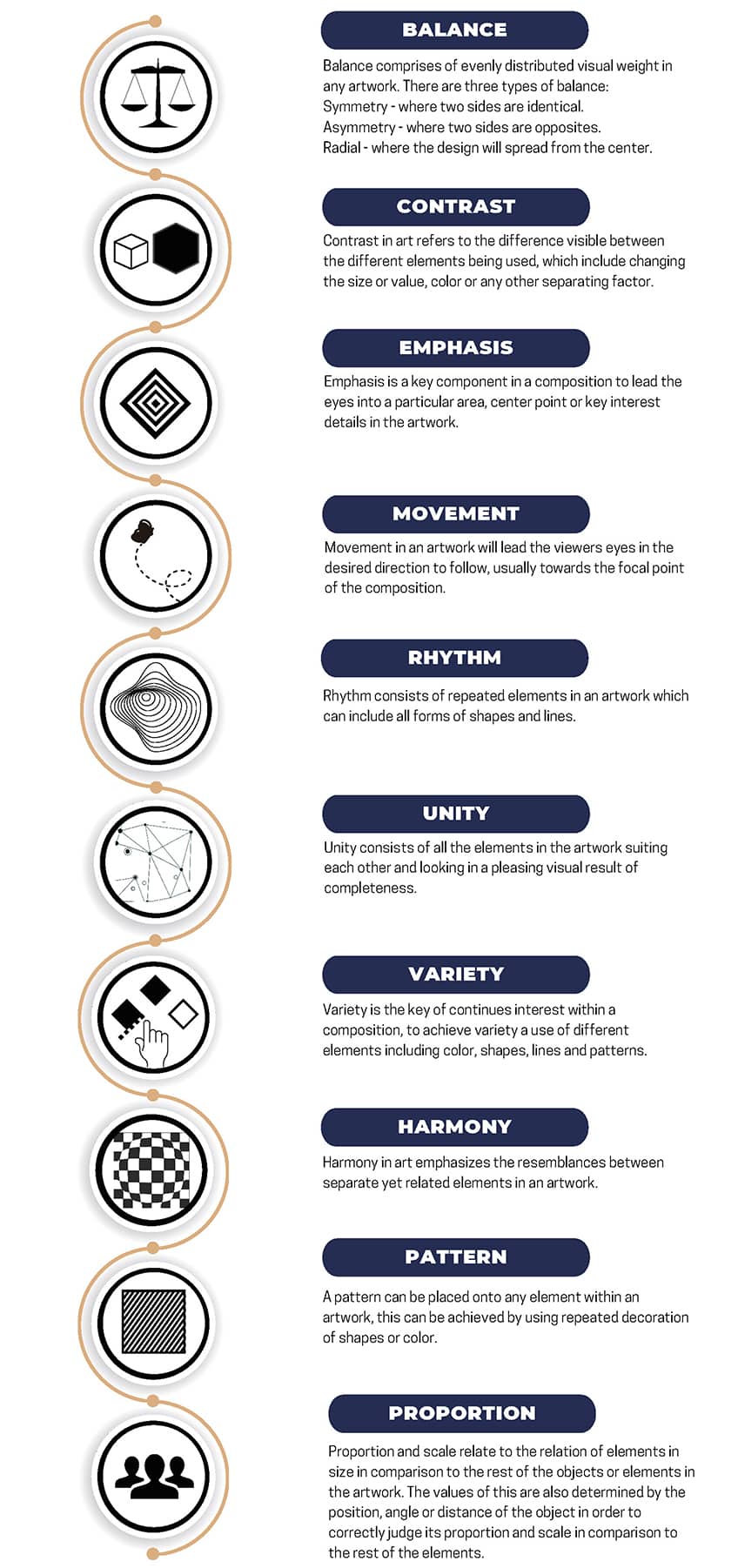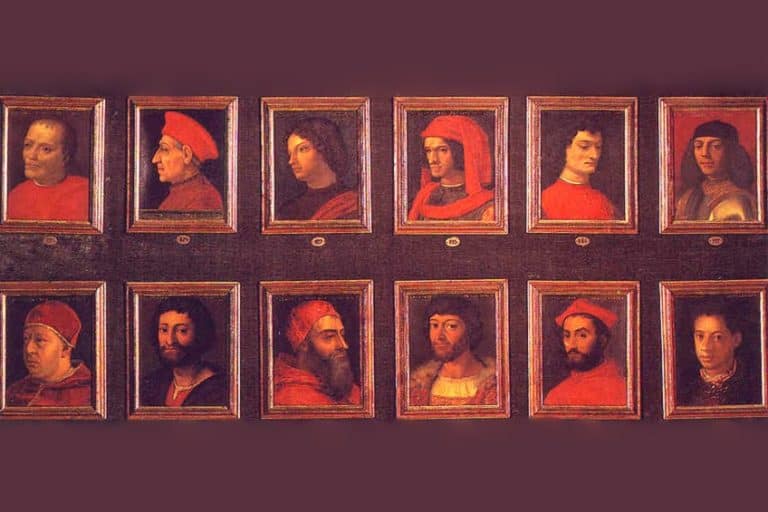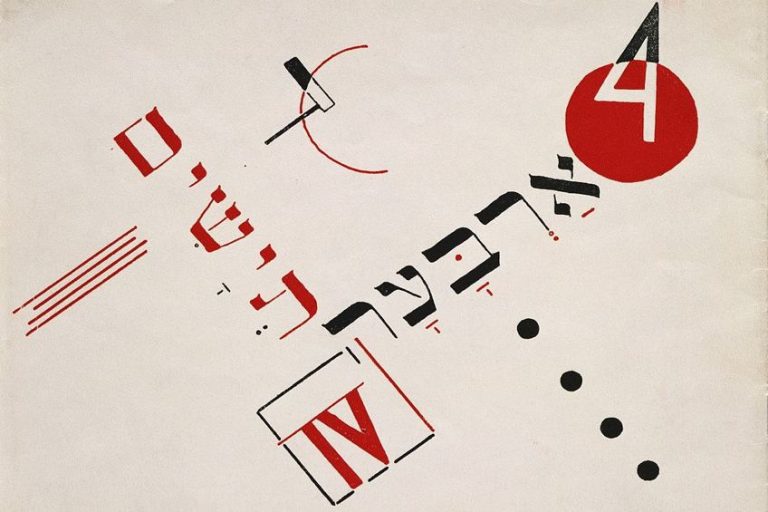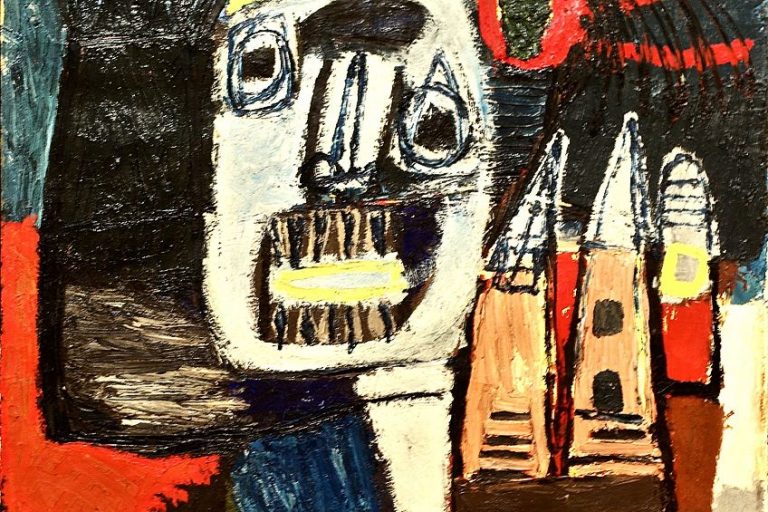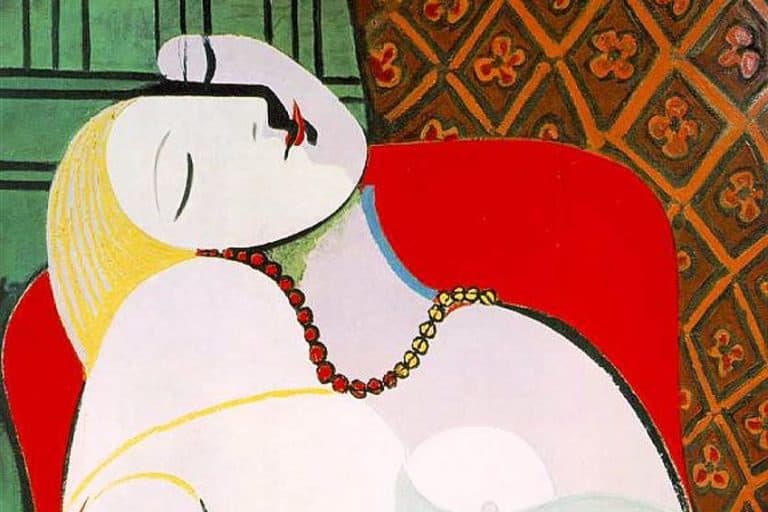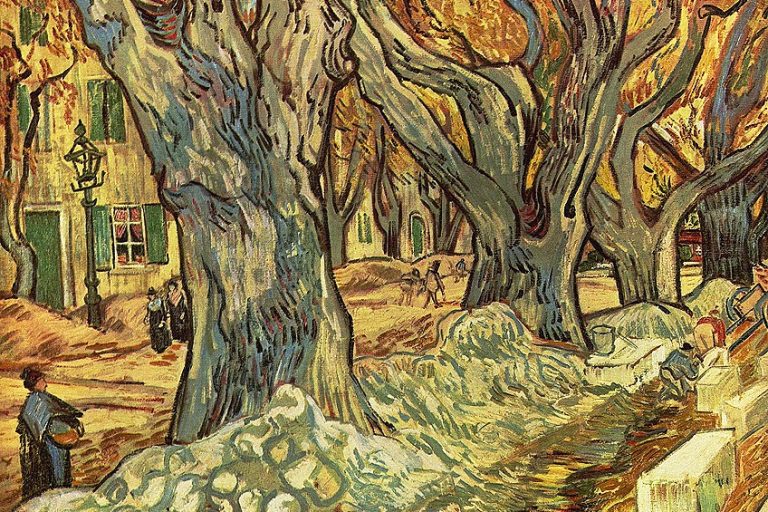Principles of Art – Understanding the Principles of Design in Art
Have you ever wondered what the building blocks of a painting are? Whether you look at a Renaissance masterpiece like the Mona Lisa (c. 1503) or an Impressionist en Plein air piece by Claude Monet, you will be confronted with a visual composition of a scene or person, which is really a combination of artistic elements and principles. In this article, we will explain what these elements of art and principles of design are.
The Fundamentals: What Are the Principles of Art?
According to the Merriam-Webster Online Dictionary, the word “principle” means: “a comprehensive and fundamental law, doctrine, or assumption”, including “a rule or code of conduct”. Therefore, a principle refers to the fundamental aspects or rules of something.
In the visual arts, it would refer to its fundamentals or rules, which leads us to the question, what are the fundamentals of visual arts, or what are the principles of art? A set of rules that artists follow that informs the composition? Often, these are also criteria used to analyze artworks.
It is important to note before we explore these art principles, that these should not be confused with the elements of art, which are described as the “visual tools” that compose an artwork. These also become criteria by which artworks are analyzed. We will also look at these in more detail below.
Furthermore, you may come across various art sources that use these two terms (elements and principles) interchangeably.
Therefore keep it in mind while you do art reading and research, and remember their differences and functions within the visual arts. We will aim to provide the differences between the two while also intentionally applying the terms interchangeably.
The Principles of Art Overview
| Art Principle | Characteristics | Artwork Example |
| Balance in Art | Balance can be symmetrical, asymmetrical, or radial. | The Last Supper (c. 1495 to 1498) by Leonardo da Vinci |
| Contrast and Emphasis in Art | Contrast is created by placing different art elements together to add emphasis, this can also be through light/dark effects. | The Calling of Saint Matthew (1599 to 1600) by Caravaggio |
| Movement and Rhythm in Art | Movement creates action or dynamic effects to lead the viewers’ eyes to the focal point. Rhythm is created through repeated elements and this creates movement. | The Great Wave (1830 to 1832) by Katsushika Hokusai The Scream (1893) by Edvard Munch |
| Unity and Variety in Art | Unity refers to the completeness of the composition and all the elements working together to create a unified whole. Variety creates an ongoing interest in a composition, it is the utilization of various art elements like color, line, or texture. | Haystacks (1891) by Claude Monet |
| Harmony in Art | Harmony is similar to unity but it can also mean the opposite of variety. | A Sunday on La Grande Jatte (1884) by Georges Seurat |
| Pattern and Repetition in Art | Art elements are placed in patterned arrangements to create an effect. | Golconda (1953) by René Magritte |
| Proportion and Scale in Art | How an object’s parts relate to each other in size. The size of the subject/object compared to the rest of the objects in the composition. | The Vitruvian Man (1490) by Leonardo da Vinci Christina’s World (1948) by Andrew Wyeth |
We now have an understanding of the elements of art, which we described as almost being like the colors on your palette. The question, “what are the principles of design?” directly relates to the elements of art, and as we go through the principles of design in art, we will see how these determine the artwork’s overall result. These could almost be seen in your paintbrushes, so to say; each paintbrush will be unique, providing a specific function to bring the composition together.
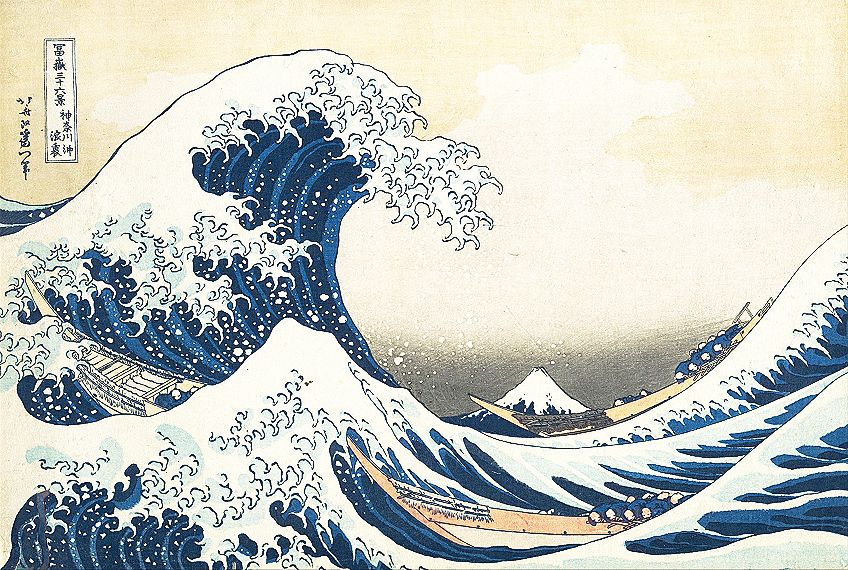
There are several principles of design in art, some sources explore it as 10, while others see it as six or seven. Some can also be grouped together as the concepts are similar, but it should be noted not to be confused by the close similarities of some.
We will outline eight art principles below, with some grouped together, and a brief explanation of each. These are, namely, balance, contrast/emphasis, movement, rhythm, variety, unity/harmony, pattern/repetition, proportion, and scale.
Balance
Balance is about the compositional “weight of visual elements”, whether these are applied in such a manner that provides the effect of even distribution. There can be symmetrical, asymmetrical, and radial balance.
Symmetrical refers to both sides being the same, or “mirroring” one another. Asymmetrical refers to both sides having different subject matter or objects, but there is a balanced effect, nonetheless. Radial balance means that the visual elements are “equally” placed around a central point in the composition.
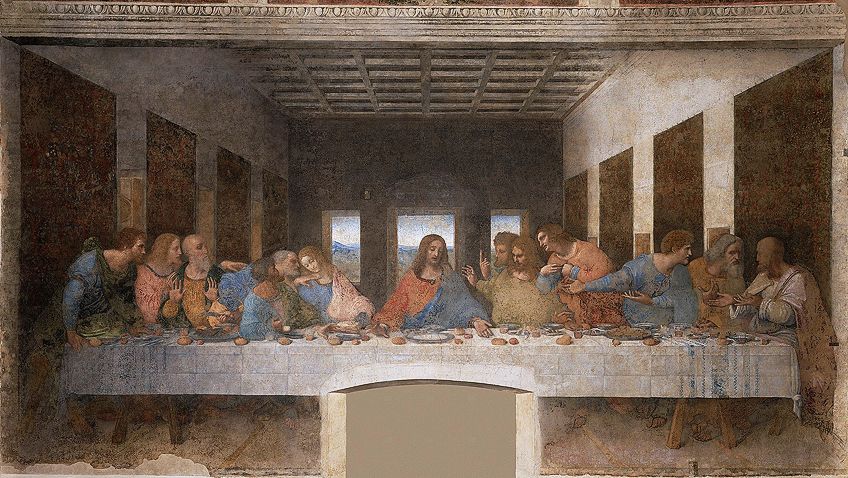
Contrast and Emphasis
Contrast refers to the placements of different elements in a composition, for example, color, space, shape, or others. By utilizing contrast strategically, it will convey a sense of emphasis, or otherwise stated; it will emphasize a certain area in the composition. See also “Notan” for an example of contrast.
Emphasis refers to a “focal point” in a composition.
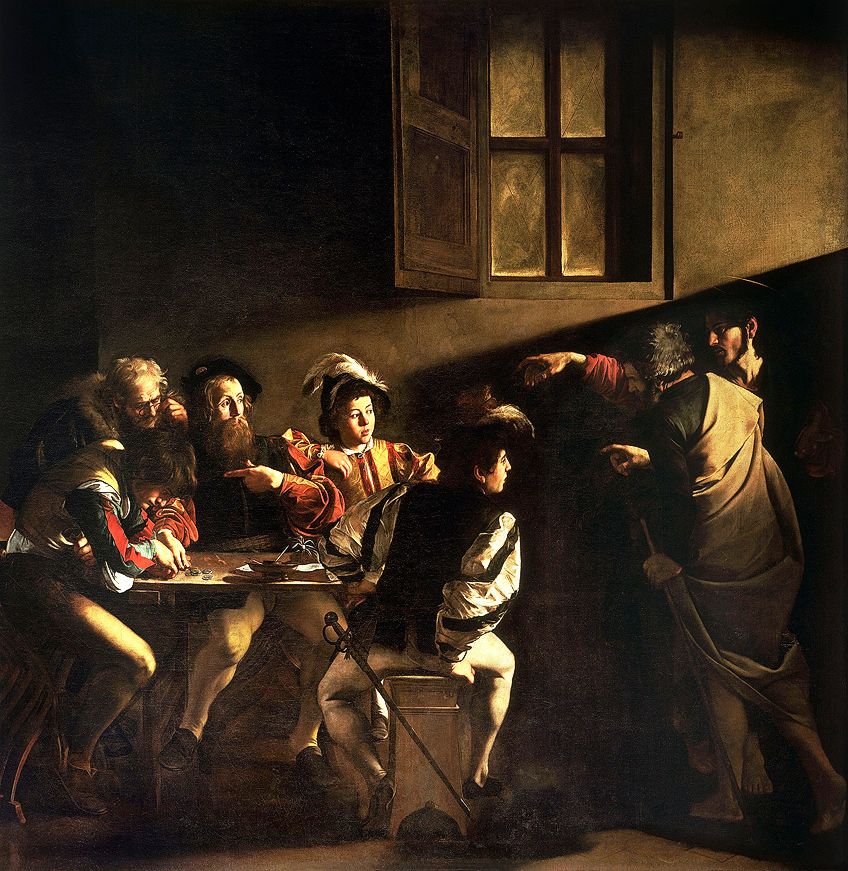
Movement and Rhythm
Movement is all about leading the eye to the focal point or central subject, or merely around the entirety of the composition. It is achieved by arranging and applying various elements in such a way that creates a sense of dynamism.
Some of the art elements that create movement can be the placement of different lines.
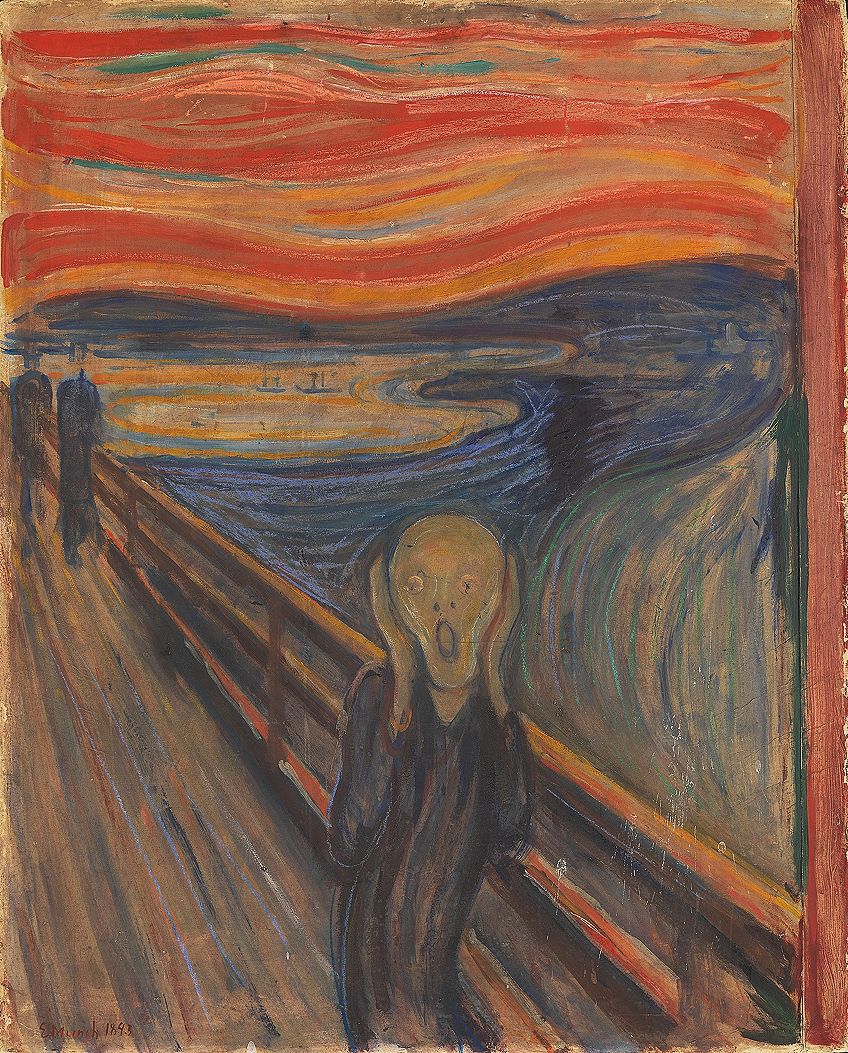
These lines are usually diagonal or curved, which add to the color, space, shape, and various other elements. Rhythm is mainly created through repeating elements or placing them in patterned arrangements.
This ultimately creates a sense of movement in a composition.
Variety
Variety is basically about different elements in a composition that gives it its uniqueness. It provides a continuing contrast, or some sources describe “chaos”, which engages the viewer and maintains a level of interest and awe for the composition; it evokes emotion and expression.
Importantly, variety also needs to be utilized in a balanced manner so as not to create too much of it that it detracts from the composition’s beauty or narrative, or too little that it creates a sense of boredom or confusion in meaning.
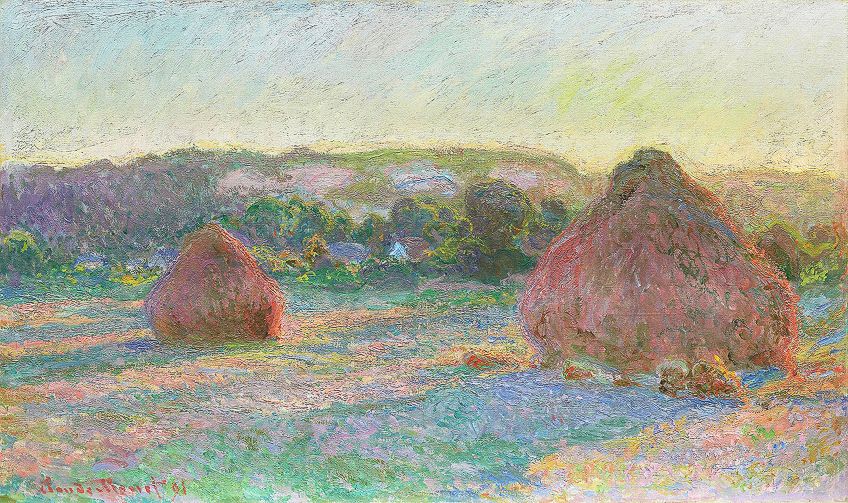
Unity and Harmony
Although this principle might seem like Balance, there is a slight difference in its implications. Both terms, unity, and harmony, can be viewed similarly and differently, which can make it confusing.
If we look at their similarities, both can refer to how all the visual elements in a composition work together, so to say. In other words, are all the visual elements complementing each other? Are there disordered visual elements?
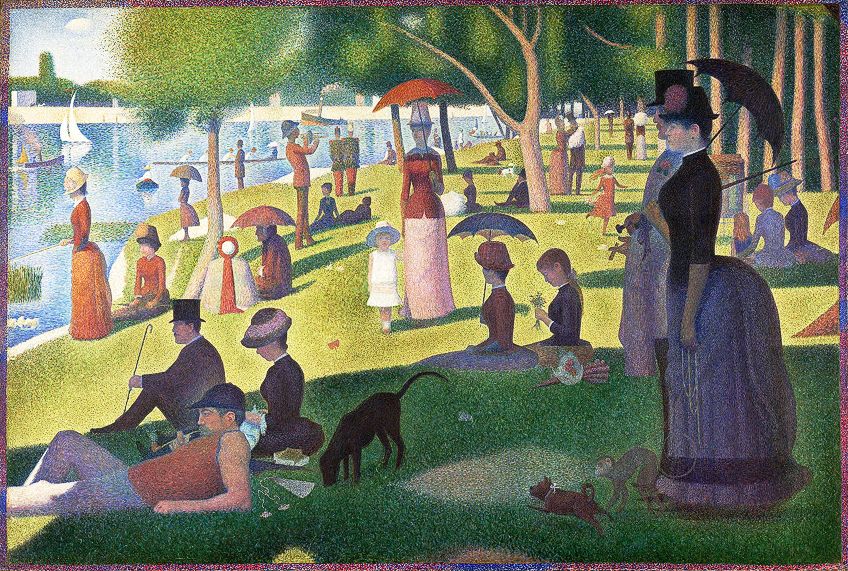
What can set the terms apart is that Harmony relates to how art elements are used in conjunction, which can be through repetition or rhythm, ultimately it is the opposite of Variety and the idea of chaos, it provides a feeling of “calm” or “flow”.
Unity can also be described as relating to the entire compositional coherence, whether you use principles of variety and harmony.
Pattern and Repetition
Patterns are art elements placed in repeated arrangements or sequences, whether these are from lines, colors, shapes, or others. This repetition in a composition can create various effects, for example, the idea of movement, texture, unity, or balance.
Proportion
Proportion refers to how an object’s parts in a composition relate to each other due to their size or shape, for example, a figure’s eye can be in proportion to the rest of his or her face, it can also be too small or too large.
This will either create emphasis or different visual effects.
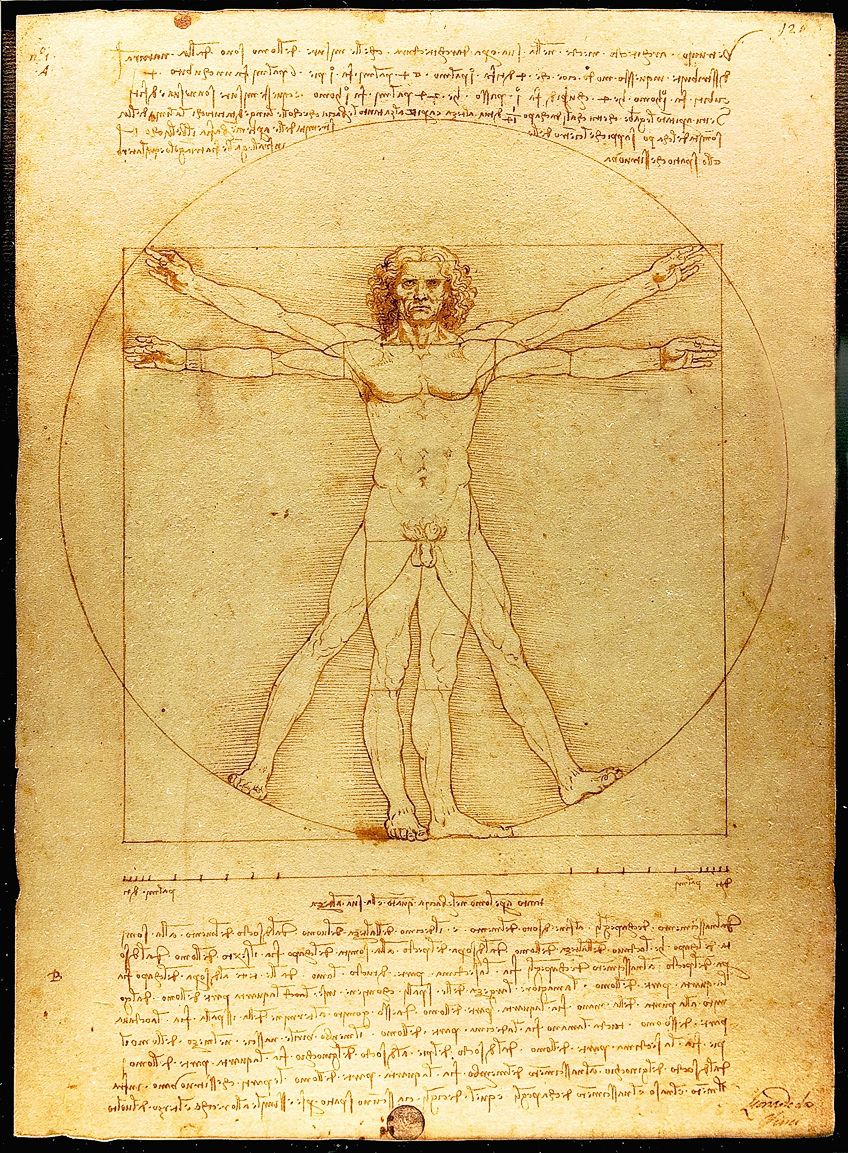
Scale
In the principles of design in art, it is important not to confuse scale with proportion. Scale relates to the object’s size within the composition compared to all the other objects. For example, a figure standing next to a building, which will be to scale if depicted accurately in terms of how it would appear in real life or as some art sources state, “typically the size of the artwork to the viewer’s body”.
The Seven Elements of Art
| Art Element | Characteristics | Artwork Examples |
| Color | We see color as reflected light that bounces off objects around us. Color has three characteristics: hue, value, and intensity. There are primary, secondary, and tertiary colors on the color wheel. | Composition VII (1913) by Wassily Kandinsky |
| Form | Form is three-dimensional with volume, which includes height, depth, and width. It includes shapes like cubes, spheres, and cones. Forms can either be organic or geometric. | David (1501 to 1504) by Michelangelo Galatea of the Spheres (1952) by Salvador Dalí |
| Line | There are vertical, horizontal, and diagonal lines. Lines can be thick, thin, curved, straight, or patterned to emphasize a shape. | The Starry Night (1889) by Vincent van Gogh Composition with Red, Yellow, and Blue (1929) by Piet Mondrian |
| Value | Value is the lightness or darkness of a color. Also referred to as “luminosity”. | Melancholy I (1514) by Albrecht Dürer |
| Shape | Shape is two-dimensional and has width and length. It includes circles, squares, rectangles, or pyramids. Shapes can be organic or geometric. | Three Musicians (1921) by Pablo Picasso Black Square (1915) by Kazimir Malevich |
| Space | Space is the distance between or around objects. Space can be positive or negative, open or closed. Space also portrays perspective and depth. | The Hunters in the Snow (1565) by Pieter Brueghel the Elder Chair (Cannes) (1961) by Pablo Picasso |
| Texture | Texture refers to the “surface quality” of an artwork. Texture can either be felt in real life or portrayed through the illusion of it by using paint or other media. | Penitent Magdalene (1453 to 1455) by Donatello The Arnolfini Portrait (1434) by Jan van Eyck
|
Let us start with the seven elements of art. As we explained above, these are the “visual tools” used to compose a painting. Think of them as the colors on your palette, as each one offers a unique quality, which gives your composition its shape, so to say.
There are seven elements of art, namely, color, form, line, value, shape, space, and texture. These are important to understand when viewing a painting, or creating a painting. We will go through each of these in more detail below.
Color
Color is an important element in visual arts because it creates significant effects, not only visually, but psychologically too. There is a science to color and many great artists have celebrated the inherent magic of color too, just think about Wassily Kandinsky or Piet Mondrian, to name a few.
Color offers a broad spectrum, so let us first start with how it works with light because this will provide some context when we next look at an artwork. Color reaches our eyes in the form of reflected light, which “bounces” off the objects around us.
There are three primary aspects or elements related to color, namely, hue, value, and intensity (this is also sometimes referred to as saturation or chroma). Hue relates to the color of the color, so to say, for example, the hue is blue, green, or purple.
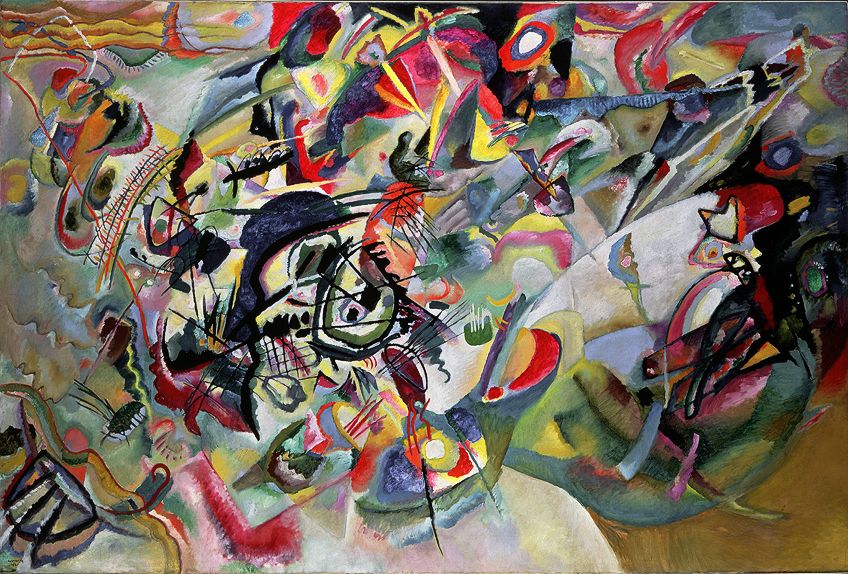
Value relates to the “lightness” of color; its lightness like white or its darkness like black, and all the other colors in between. If a white is added to a color it becomes known as a “tint” and the value of it becomes lighter, and conversely, if black is added to a color it becomes a “shade” and the value becomes darker.
Intensity relates to how bright or dull a color appears. This can often be confused with value too, but the distinguishing factor between the two is that intensity otherwise referred to as saturation, refers to the brightness of the color. However, if the value of the color is lighter the intensity of the color will also decrease and vice versa.
The color wheel is another important aspect and includes the primary, secondary, and tertiary colors. The primary colors consist of red, blue, and yellow and the secondary colors consist of purple, orange, and green.
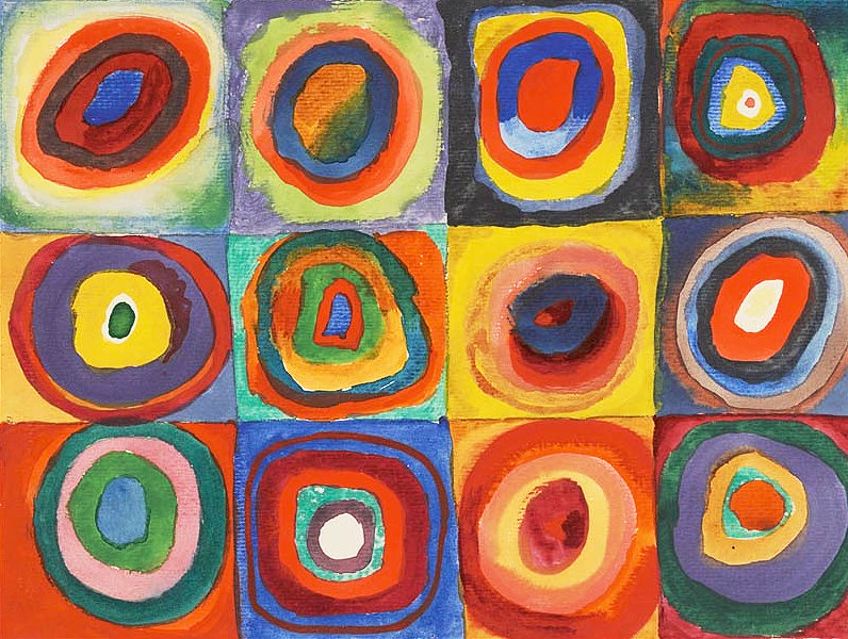
The colors between primary and secondary colors are referred to as “intermediary” colors, namely, yellow-green, yellow-orange, red-orange, red-purple/violet, blue-green, and blue-purple/violet. It is important to note here that these intermediary colors are also sometimes called tertiary colors.
However, several online sources state that tertiary colors are, in fact, the combination of two secondary colors and not the intermediary colors, which are a combination of primary and secondary colors, evident on the color wheel.
Value
Value is another element of art closely connected to color. As we mentioned above, value refers to the lightness and darkness of any color. Another term that relates to value is also “luminosity”. For a better understanding of how value really works, you can view an image on a grayscale, in which, there will be lighter and darker areas.
This gives an indication of the lighter and darker areas of color. Another term utilized here is “contrast”, which refers to the difference between the lighter and darker areas.
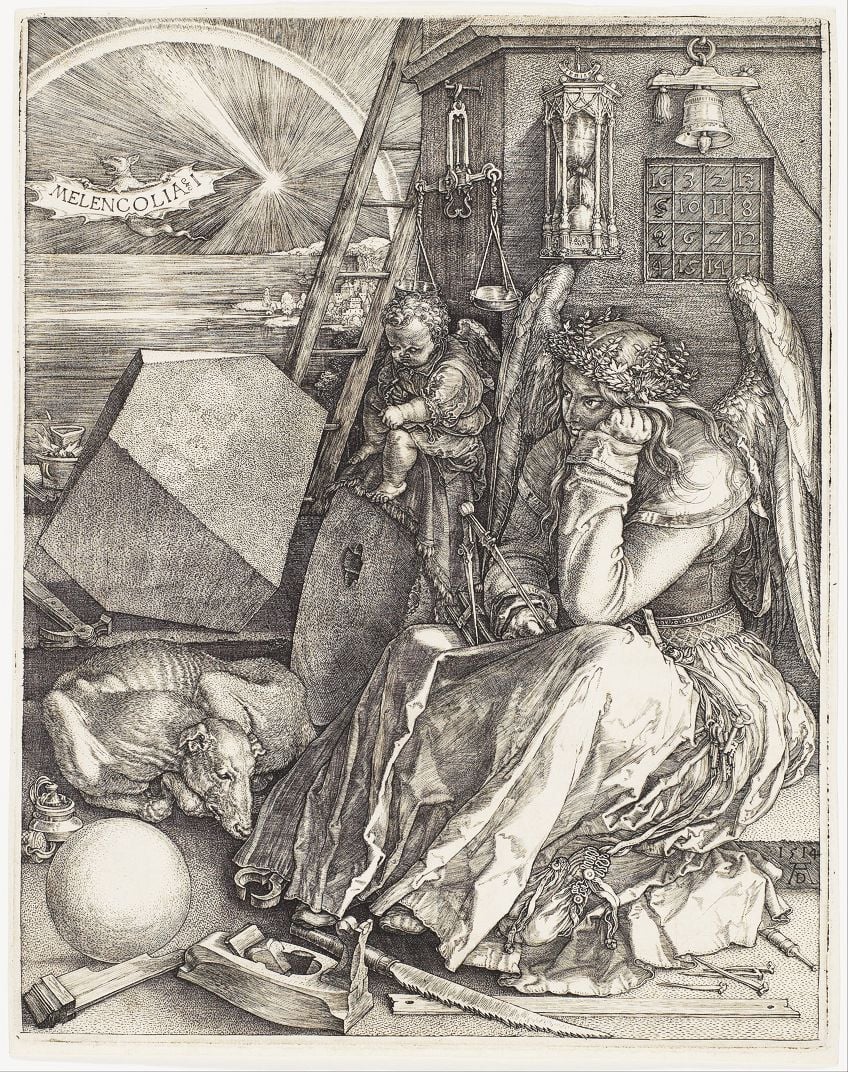
Line
Line in visual art is considered one of the more important elements and, by paraphrasing, it is typically described as a mark that moves in space between two points. There are different types of lines, namely, vertical, horizontal, and diagonal.
Lines can also appear thick, thin, curved, straight, short, long, or patterned, which creates varying effects in a composition.
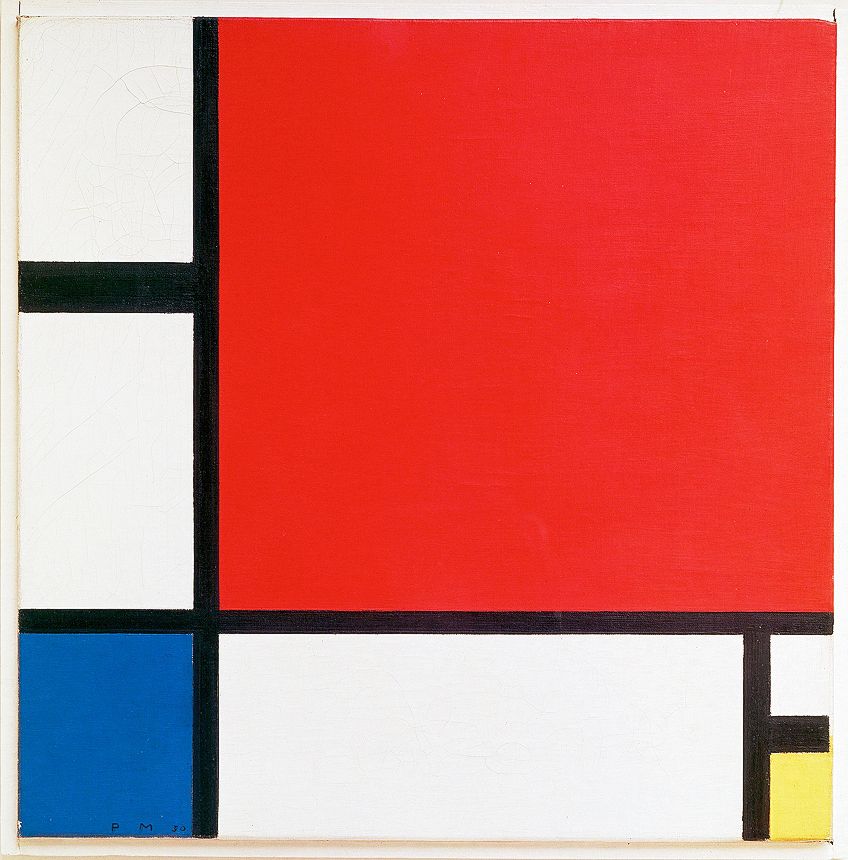
For example, movement, depth, shading, perspective, as well as emphasizing a shape or “contour” can be created with line. This is visible if we look at examples of artists who applied thick dark outlines to shapes from the Expressionism art movement.
Some notable artists who made use of thick lines are Edvard Munch and Vincent van Gogh.
Form
Form as an art element refers to the three-dimensionality of an object, it is usually described as having volume, which comprises width, height, and depth. It is also represented through other elements like color variations and lines to indicate a contour or outline.
Furthermore, in visual art, we are generally looking at a two-dimensional surface, therefore a form creates the “illusion” of three-dimensionality.
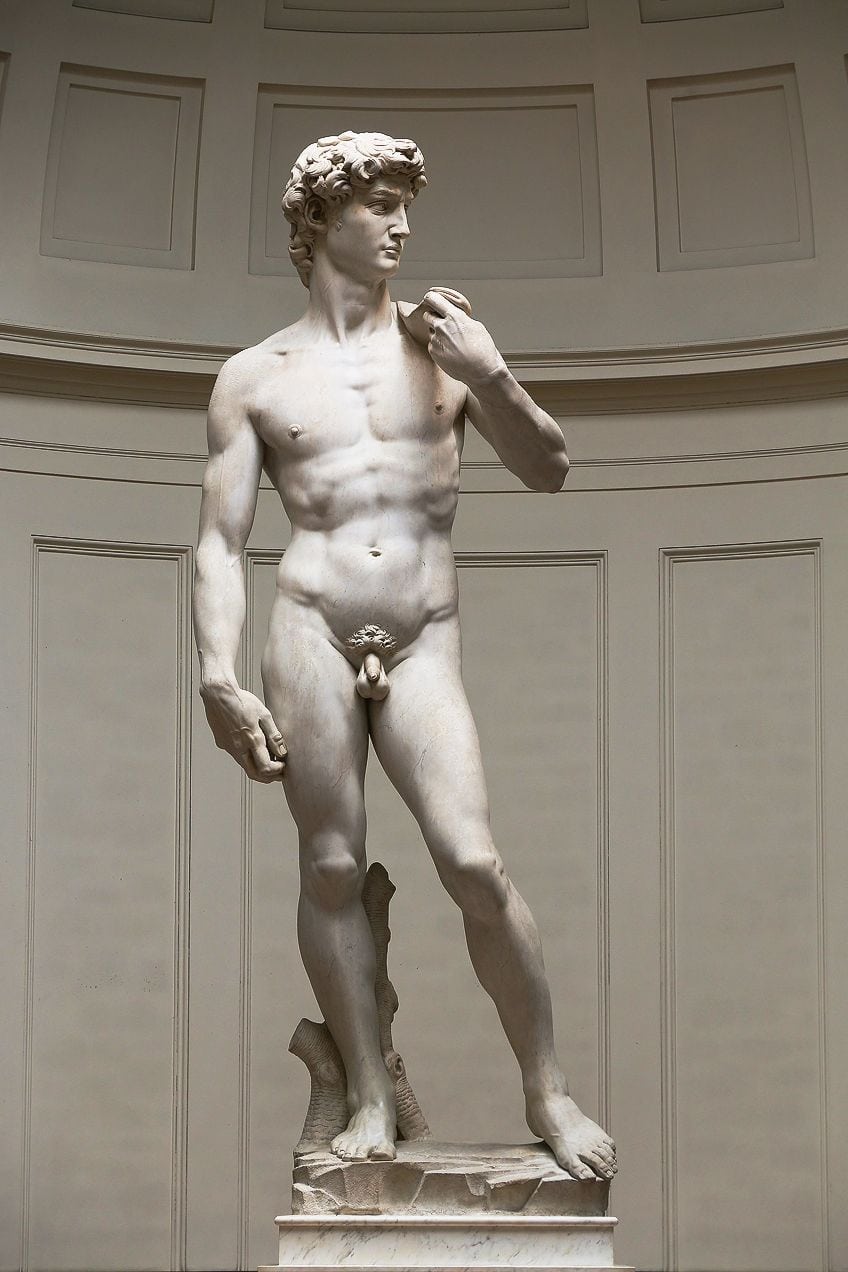
There are different types of forms, namely, organic, and geometric forms. Organic forms can originate from nature and are more random and asymmetrical; geometric forms are described as “mathematical”, namely, the cylinder, cube, cone, or pyramid, and sphere.
Shape
Shape relates closely to form, but the main difference is that a shape refers to two-dimensionality. It is often described as “flat”, with only length and width, and does not have the same appearance of volume that a form has. Similarly, shapes can also be grouped under the categories, geometric or organic.
Shape gives the contour of an object, which essentially comprises lines.
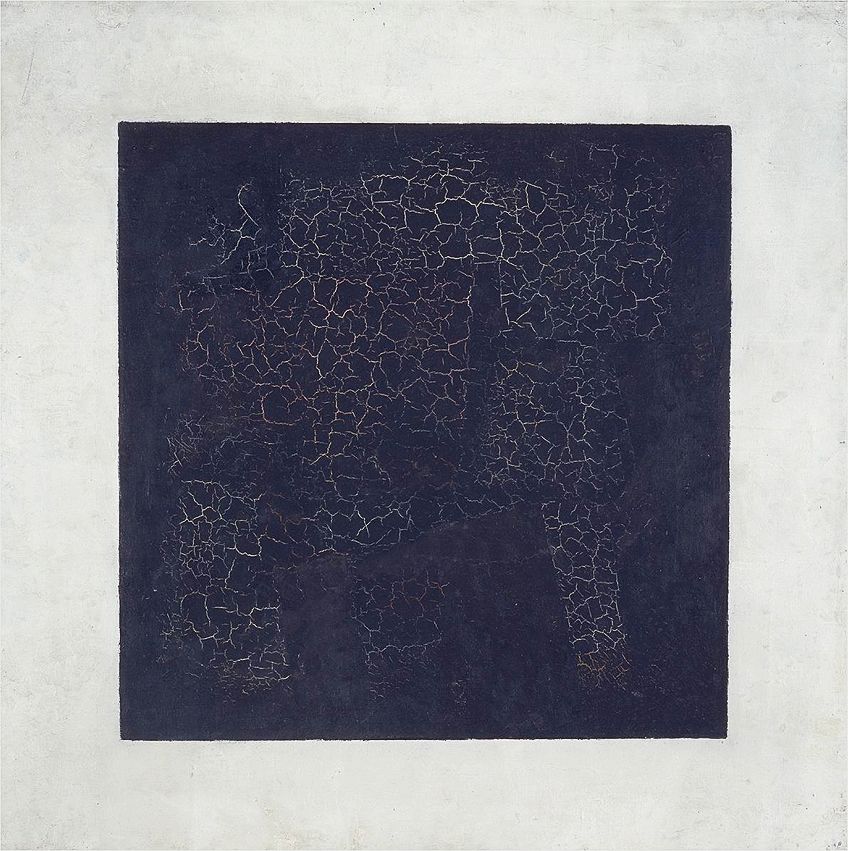
There are different types of shapes, namely, circle, square, triangle, rectangle, oval, and others. A fun fact about these shapes is when they turn into forms, for example, a circle becomes a sphere, a triangle becomes a cone, and a square becomes a cube, and so forth.
Another artistic technique that conveys shapes is using positive and negative space.
Space
Space is often described as the “distance” either “within”, “around”, or “between” the compositional space, which can be a canvas, a sculptural space, or any other form of art. There are also different types of space, namely, positive, negative, and open and closed space.
Positive space is the object or subject itself in a work art, for example, if a pair of scissors is drawn, the positive space would be the pair of scissors. The negative space is the space around the subject, in this case, the pair of scissors and the area in the loops of the scissors would constitute the negative space.
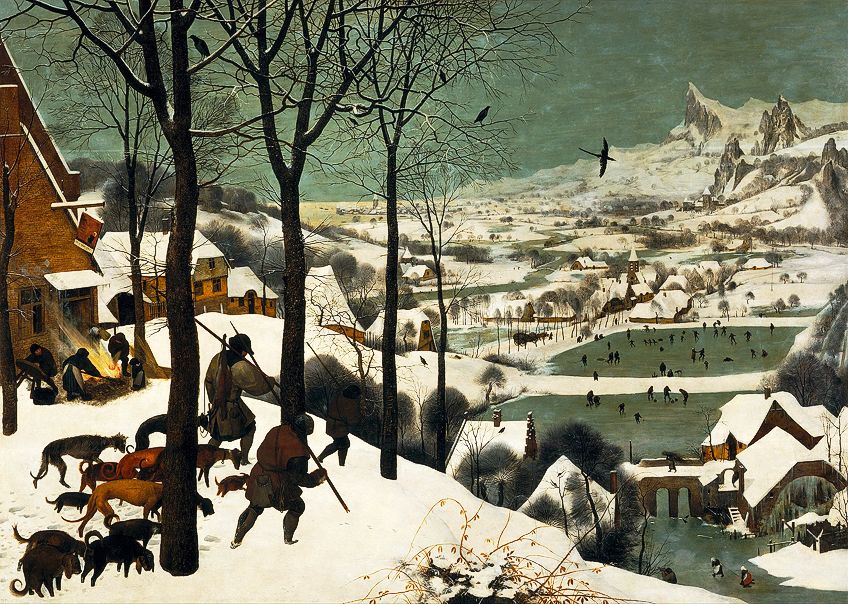
This is like open and closed spaces, where the object would be in the closed space and the open space would be around it. Space is also conveyed when a composition is separated into parts, especially when you analyze a painting and describe the subject matter in terms of its spatial arrangements, which can either be in the foreground, middle ground, or background, upper, lower, left, or right.
Additionally, space is conveyed in art through variations of depth, otherwise referred to as perspective, and proportion otherwise referred to by size.
Texture
Texture is all about feeling, and there are typically two primary ways it is conveyed in visual art, namely, in real life, or three-dimensional space, for example, sculptures or the “tactile” feeling of paint on a canvas, for example through the “impasto” technique, where the paint is physically textured on the canvas.
The other way that texture can be shown is through suggestion or the “illusion” of texture on a two-dimensional space.
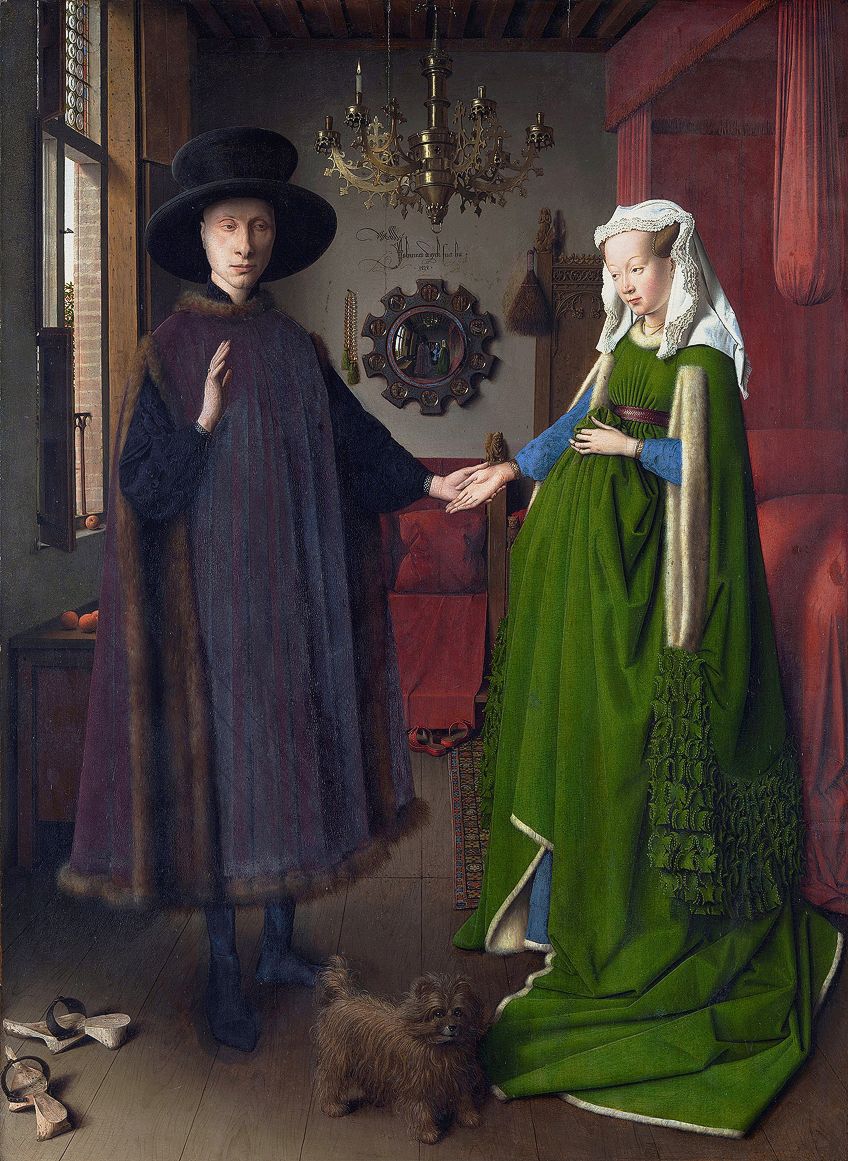
This is done by utilizing various techniques with paint, pencil, or pen on a canvas or piece of paper. Both refer to what is described as the “surface quality” of an artwork. Texture gives character to an art form and creates psychological effects for us, the viewers when we engage with it.
Bringing It All Together
In the article above we explore the seven principles of art, which we have noted is also referred to as the element of art. However, it is important to remember the difference between the elements of art and principles of design, so to say.
The elements of art can be viewed as the colors on your palette, and the principles of design can be viewed as the different paintbrushes. When applying each color, or art element, with a specific paintbrush, or art principle, you will create a compositional whole.
Read also our Principles of Arts web story.
Frequently Asked Questions
What Are the Principles of Design?
There are several principles of design in art, which can all be applied to create certain visual effects and feelings. These are balance, contrast/emphasis, movement, pattern/repetition, proportion, rhythm, scale, unity/harmony, and variety.
What Is the Difference Between the Elements of Art and the Principles of Design?
The elements of art and the principles of design are different, but sometimes the terms are used interchangeably. The elements of art are described as visual tools for artistic compositions, and the principles of design in art are all about how these elements are utilized.
What Are the Seven Principles of Art?
There are commonly seven elements of art. These have been described in different ways; some sources refer to them as the building blocks for artistic compositions while other sources have described these as the visual tools utilized to create compositions. These are as follows: color, form, line, texture, shape, space, and value.
Alicia du Plessis is a multidisciplinary writer. She completed her Bachelor of Arts degree, majoring in Art History and Classical Civilization, as well as two Honors, namely, in Art History and Education and Development, at the University of KwaZulu-Natal, South Africa. For her main Honors project in Art History, she explored perceptions of the San Bushmen’s identity and the concept of the “Other”. She has also looked at the use of photography in art and how it has been used to portray people’s lives.
Alicia’s other areas of interest in Art History include the process of writing about Art History and how to analyze paintings. Some of her favorite art movements include Impressionism and German Expressionism. She is yet to complete her Masters in Art History (she would like to do this abroad in Europe) having given it some time to first develop more professional experience with the interest to one day lecture it too.
Alicia has been working for artincontext.com since 2021 as an author and art history expert. She has specialized in painting analysis and is covering most of our painting analysis.
Learn more about Alicia du Plessis and the Art in Context Team.
Cite this Article
Alicia, du Plessis, “Principles of Art – Understanding the Principles of Design in Art.” Art in Context. March 4, 2022. URL: https://artincontext.org/principles-of-art/
du Plessis, A. (2022, 4 March). Principles of Art – Understanding the Principles of Design in Art. Art in Context. https://artincontext.org/principles-of-art/
du Plessis, Alicia. “Principles of Art – Understanding the Principles of Design in Art.” Art in Context, March 4, 2022. https://artincontext.org/principles-of-art/.


